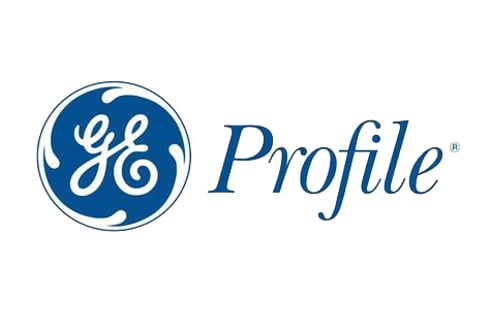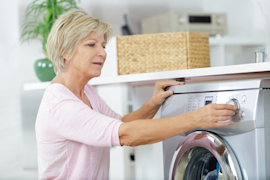- Kenmore refrigerator water filters
- Whirlpool refrigerator water filters
- Samsung refrigerator water filters
- GE refrigerator water filters
- LG refrigerator water filters
- Frigidaire refrigerator water filters
- KitchenAid refrigerator water filters
- Maytag refrigerator water filters
- Kenmore Elite refrigerator water filters
- Estate refrigerator water filters
- GE Profile refrigerator water filters
- Amana refrigerator water filters
- Bosch refrigerator water filters
- Dacor refrigerator water filters
- Electrolux refrigerator water filters
GE Profile front-load washer error codes

These error code explanations can help you diagnose a problem with your GE Profile front-load washer. For repair how-to help, visit the PartsDirect repair help section, which includes repair help for washing machines, other major appliances, lawn and garden equipment, garage door openers, vacuum cleaners and more. Search for your model number to find a complete list of replacement parts for your washer.
Error Code
Condition
DIY advice
E1
User interface control board is defective
Check/Repair
Unplug the washer for 3 minutes to reset the control boards. If the code appears when you plug the washer in, replace the user interface control board.
Possible parts
User interface control board
E2
Main control board is defective
Check/Repair
Unplug the washer for 3 minutes to reset the control boards. If the code appears when you plug the washer in, replace the main control board.
Possible parts
Main control board
E4 or E5
Failed thermistor
Check/Repair
Unplug the washer and reconnect any loose wires on the thermistor (temperature sensor). Replace the wire harness if damaged. Check the resistance of the thermistor using a volt/ohm meter. If the resistance of the thermistor is less that 10,000 or more than more than 14,000 ohms, replace the thermistor.
Possible parts
Thermistor, wire harness
E6
Water level sensor is defective
Check/Repair
Unplug the washer and reconnect any loose wires on the water level sensor. Replace the wire harness if damaged. Test the water level sensor using the service test mode as described in the tech sheet. (The tech sheet is behind the lower front service panel. Unplug the washer before removing the lower front service panel to access the tech sheet.) If the water level sensor fails the test, replace it.
Possible parts
Water level sensor, Wire harness
E7
Slow fill
Check/Repair
Make sure the water supply faucets behind the washer are fully open. Check the fill hoses for kinks or, in winter, freezing. Check the screens on the water inlet valves for debris or deposits. Replace the water inlet valve assembly if the water inlet screens are clogged.
Possible parts
Water inlet valve assembly
E8
Drain problem
Check/Repair
Remove excess suds; the washer can't drain excessively sudsy water. Unplug the washer and check the large-item filter in the drain pump for a clog. If the drain pump is defective, replace it.
Possible parts
Drain pump
E9
Dispenser problem
Check/Repair
Unplug the washer and check the mechanical linkage on the dispenser housing. Repair or replace any damaged parts.
Possible parts
Dispenser assembly parts
E10
Drive motor communication error
Check/Repair
Unplug the washer and reconnect any loose wires on the drive motor. Replace the wire harness if damaged. If the wiring connections are okay, have a service technician check the motor and the main control board in the washer. The drive motor and/or the electronic control board may need to be replaced.
Possible parts
Drive motor, Wire harness, Main control board
E11, E12, E13 and E28
Door lock assembly problem
Check/Repair
Check the door lock assembly for damage or a loose wiring connection. If there are no problems, replace the door lock assembly.
Possible parts
Door lock assembly
E14
Washer overfilled with water
Check/Repair
Unplug the washer and, if the washer is overfilled with water, check the water inlet valve assembly for proper shutoff of water flow. Replace the water inlet valve assembly if the washer continues to fill with water while electrical power is disconnected. If the washer is empty when this error code appears, replace the water level sensor.
Possible parts
Water level sensor, Water inlet valve assembly
E15
Drive motor windings are defective
Check/Repair
Unplug the washer and reconnect any loose wires to the drive motors. If the wiring connections are okay, replace the drive motor.
Possible parts
Drive motor
E16, E18, E19, E20 or E21
Drive motor problem
Check/Repair
Ensure all 4 shipping bolts have been removed. Rotate the spin basket to see if it spins freely. Remove any foreign objects that may be trapped between the spin basket and the outer plastic tub. Unplug the washer and reconnect any loose wiring connections on the drive motor. If the wiring connections are okay, replace the drive motor.
Possible parts
Drive motor
E22, E23, E24, E25, E3 or E17
Internal failure in the drive motor
Check/Repair
Unplug the washer and reconnect any loose wiring connections on the drive motor. If the wiring connections are okay, replace the drive motor.
Possible parts
Drive motor
E26
Communication failure between the user interface control board and the main control board
Check/Repair
Unplug the washer and reconnect any loose wires to the user interface control board and main control board. If the wiring connections are okay, replace the user interface control board. If the problem persists, replace the main control board.
Possible parts
User interface control board, Main control board
Most common symptoms to help you fix your washers
Choose a symptom to see related washer repairs.
Main causes: clogged drain hose, house drain clogged, bad drain pump, water-level pressure switch failure, bad control b…
Main causes: worn agitator dogs, bad clutch, broken motor coupler, shifter assembly failure, broken door lock, suspensio…
Main causes: bad lid switch or door lock, bad timer or electronic control board, wiring failure, bad water inlet valve a…
Main causes: broken lid switch or lid lock, bad pressure switch, broken shifter assembly, faulty control system…
Main causes: unbalanced load, loose spanner nut, worn drive block, broken shock absorber or suspension spring, debris in…
Main causes: no water supply, bad water valves, water-level pressure switch failure, control system failure, bad door lo…
Main causes: lack of electrical power, wiring failure, bad power cord, electronic control board failure, bad user interf…
Main causes: leaky water inlet valve, faulty water-level pressure switch, bad electronic control board…
Main causes: water heater failure, bad water temperature switch, faulty control board, bad water valve, faulty water tem…
Most common repair guides to help fix your washers
Effective articles & videos to help repair your washers
Use the advice and tips in these articles and videos to get the most out of your washer.

Find tips for using your washing machine efficiently to save energy and help reduce utility bills.…

Learn about all the convenient features on our Sears PartsDirect website that make your parts purchases easier.…

Get answers to frequently asked questions about Sears and Sears PartsDirect.…